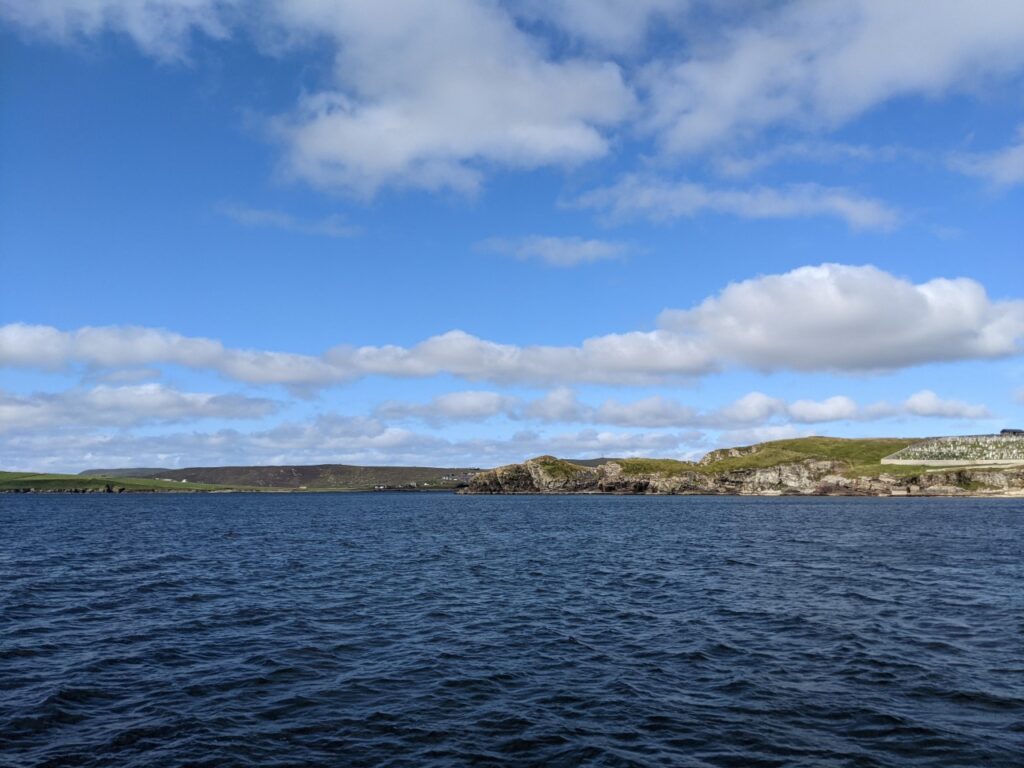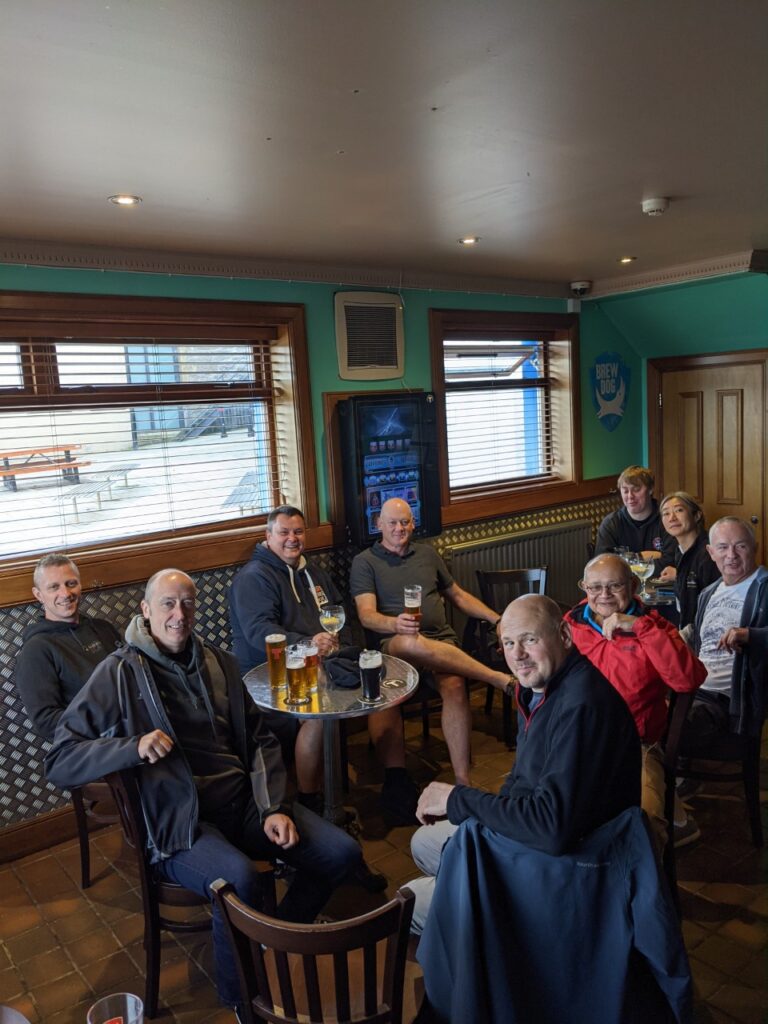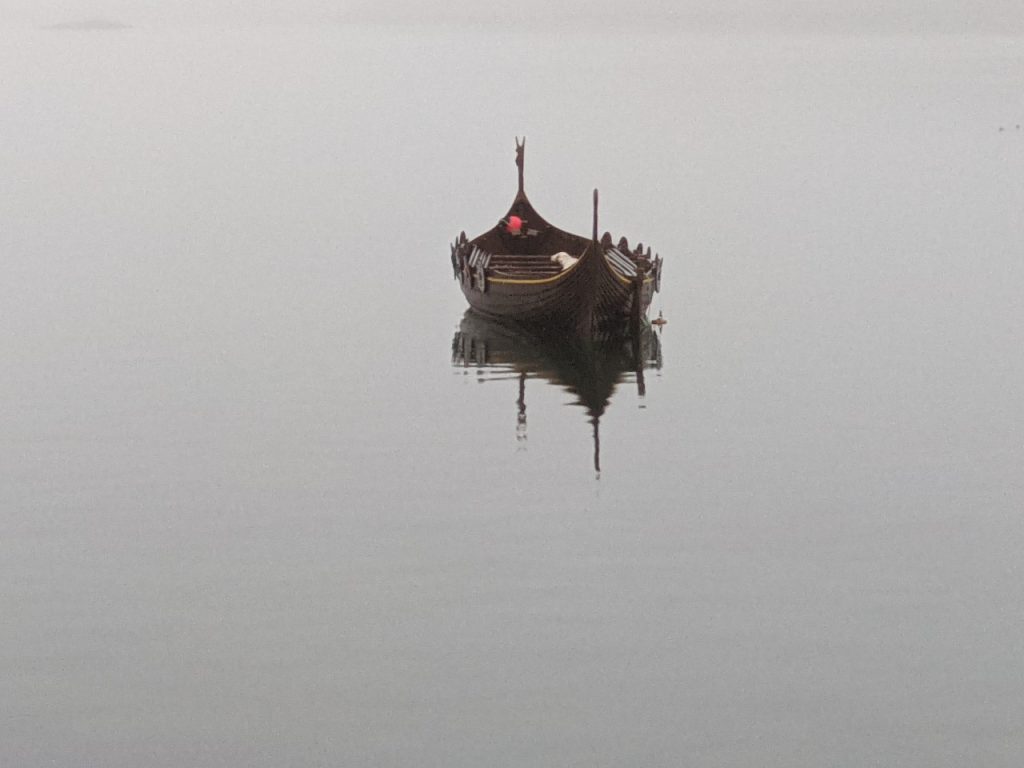To get to the Shetlands for a TSAC member is long and drawn out.
You can fly from Manchester, but the usual route is via ferry. A seven hour drive to Aberdeen followed by an overnight ferry to Lerwick, basically a twenty four hour journey. Cost of return ferry (including a shared cabin) is £220. Cost of the dive week on a liveaboard £600 and some meals on top (and a few beers). Egypt is closer (time wise) and possibly the same or a bit cheaper.
So why bother?
That is a very good question and I haven’t started by painting a very good picture but I can honestly state that it is more than worth it.
Arriving early morning with the boat waiting for us kit is unloaded, cars parked up and we settle in for a boat briefing followed by the boat heading out for the first dive of the week.

Each dive is preceded by a briefing comprising of the history or tales surrounding the site. A brief overview of the highlights (sea life and points of interest) and a detailed description of the route to be followed and then the surfacing safety protocols.
Our check dive is a small Russian trawler (known as a Klondyker) called the Pionersk. This I suppose is the test Is it going to be of any interest, or any good? The afternoon is a reef/wall dive called the Giants Legs, again another dive to ease us into the week.
Over the following days we dive a series of wrecks and reefs all with different depths 18 – 40 meters and all with a history and a tale to tell such a as the Bards cave (or Orkney man’s cave) where a sailor was rescued when his voice was heard echoing down from the end of the cave. The Lunokhods, a Russian factory fish ship, split in three which can be dived in many ways, we dropped to the deep section (40m) investigated it for a few minutes then swam over the mid section debris field to the upper part at 15m, a fascinating difference between the sections.
There is the poignant dive on the E49 Submarine. A six hour journey up to Balta Sound to dive this war grave with all of the 31 crew lost. This is now slowly sinking beneath the sand but still an interesting and, as I said, a poignant dive and certainly worth the trip.

What makes these dives special?
Well a wreck is a wreck and a wall is a wall but in the Shetlands this is intensified by the location, the tales and, in many cases, the history. The real bonus is the fantastic visibility. With the North Atlantic waters washing through the Shetlands the visibility was up to 15 meters in places making for superb diving. The waters also brought out and enabled the viewing of large numbers of large sized marine life species from crustaceans and fish to the numerous nudibranchs (I think our resident marine biologist counted fifteen on one dive). In between and indeed during dives we were able to view fantastic scenery and impressive cliffs towering over us.
On the surface we saw dolphins and porpoise, seals, whales and sea birds. We also travelled overland to see the resident Orca pod and in the mornings watched a family of four sea otters playing and feeding, four hundred yards from the dive boat.
On our liveaboard we were fed great food and were never without a warming brew and snacks at down times and immediately after boarding the boat.
In the evenings we alternated between onboard meals, visiting local restaurants and takeaway options. Most nights ended in a visit to one of the many welcoming bars and a few whiskies to round off the evening.

So, returning to the original question; why go to the Shetlands for Diving?
The diving is superb, there is something for everyone in fact everything in place for an excellent week and, if you like British diving, this is a superb way of engaging in an exemplary form. If you are new to British diving it’s a great way to get to know what the UK waters provide in terms of experience, marine life and interest and it is certainly a springboard to exploring other areas of the country.
I would definitely recommend the Shetlands for a dive trip and if you see one advertised get your name down quickly. Remember that the dives do require a good level of experience so get diving and sign up for some of the trips being advertised. It is worth the effort.
If in doubt speak to the TSAC DO and ask about some specialist skills courses that could be run and why not use the new TSAC library at the John Alker to suggest some tips that could be organised. There is good experience at the club and many people who would be happy to co-organise a trip in order to help you develop those particular skills.
If you want more information about the Shetlands and some other view points login to your BSAC site and go to the iSCUBA 113 Aprils Shetland special article.


